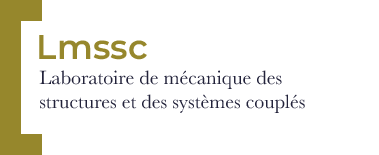Vibration Damping Using Analogous Piezoelectric Networks: 10 Years of Research at Cnam and Georgia Tech
Résumé
Structural vibrations can be reduced by employing piezoelectric material as passive electromechanical transducers. Piezoelectric shunt damping consists in connecting a one-port electrical circuit to a piezoelectric transducer for impedance matching and thus optimized energy transfers. Using passive components such as resistors, inductors or capacitors leads to autonomous and inherently stable control solutions. When using an inductance in parallel with the piezoelectric capacitance, impedance matching is reached when tuning the resonance of the shunt to a natural frequency of the mechanical structure. The equivalent of a tuned mass damper is thus implemented with a vibration absorber that is designed as the electrical counterpart of the mechanical resonance to be controlled. This classical uni-modal case introduces the interest of electrical analogues for piezoelectric damping. Indeed, analogous coupling can be extended to broadband vibration mitigation. A multi-resonant electrical network is then required to approximate the modal properties of the mechanical structure. On one hand, the electrical network should exhibit similar modal distributions. Such a spatial coherence condition is met by discretizing the constitutive equations of the continuous mechanical medium, applying an electromechanical analogy, and deriving the electrical connections which are analogous to the considered mechanical boundary conditions. On the other hand, the structure and the electrical network should have similar wave propagation properties to meet a frequency coherence condition. Hence, a passive broadband damping can be achieved by coupling a structure to its analogous electrical network. After a first experimental validation on a rod in 2014, this method was then applied to vibration mitigation of other structures such as straight beams (2015), plates (2015 & 2018), curved beams (2019), thin rings (2022), thick beams and plates (2023) and thick rings (2023). This 10-year line of research has created opportunities for fruitful collaborations between the Conservatoire national des arts et métiers (France) and the Georgia Institute of Technology (USA). Such investigations on passive analogous networks may now extend to digital implementation and hybrid active-passive electrical networks.

